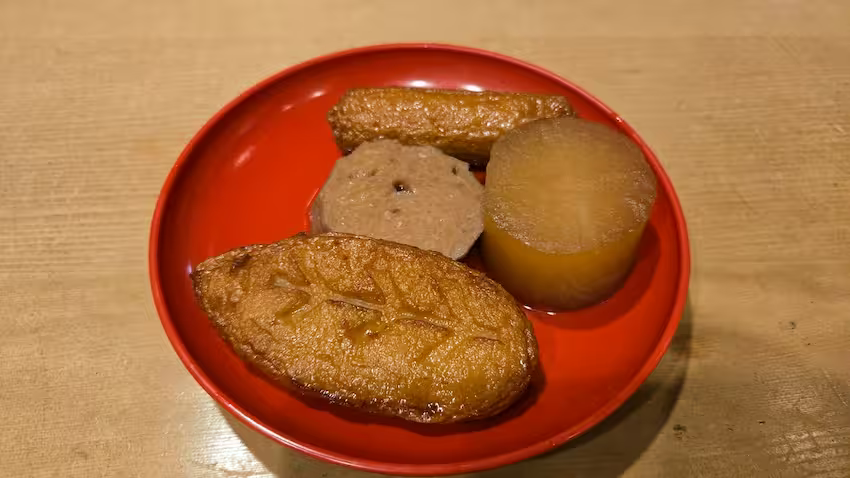Exploring the Comforting Tradition of Japan Oden
When it comes to Japanese comfort food, few dishes capture the warmth and tradition of winter dining quite like japan oden. This simple yet deeply satisfying dish has been part of Japanese food culture for centuries, offering nourishment, flavor, and a sense of community during the colder months. Though it may appear humble at first glance, japan oden carries with it a rich history, diverse regional variations, and a cherished place in both household kitchens and street stalls across the country.
The Origins of Japan Oden
Oden’s roots trace back to the Muromachi period, where it began as a grilled dish of skewered tofu known as dengaku. Over time, it evolved into the simmered delicacy we recognize today. The introduction of soy sauce in the Edo period further transformed its flavor profile, making it more savory and aromatic. As centuries passed, the dish spread from region to region, with local adaptations creating unique versions while preserving its essence as a hearty, simmered hot pot of assorted ingredients.
A Dish That Represents Warmth and Togetherness
At its heart, japan oden is more than just food—it symbolizes connection and comfort. During the cold seasons, families gather around steaming pots of oden, sharing not only a meal but also warmth and companionship. The slow simmering of ingredients in a light yet flavorful broth reflects the patience and care associated with traditional Japanese cooking. Street vendors and convenience stores also sell oden, providing travelers and busy workers a quick way to enjoy its homely appeal, reinforcing its reputation as a dish that bridges both everyday life and cultural heritage.
Key Ingredients That Define Japan Oden
The beauty of japan oden lies in its variety. Common ingredients include daikon radish, hard-boiled eggs, konjac, tofu, and fish cakes, each absorbing the savory broth while contributing their unique textures. Daikon becomes tender and juicy, eggs soak in subtle umami, while fish cakes add richness and depth. Regional versions often introduce special additions—Shizuoka’s dark broth uses beef sinew, while Kansai’s style emphasizes a lighter soup. No matter the ingredients chosen, the harmony created by simmering them together is what makes oden so special.
Regional Variations of Japan Oden
Different parts of Japan bring their own interpretations to oden, showcasing the diversity of Japanese culinary culture. In the Kansai region, the broth is light and delicate, highlighting the flavors of the ingredients. In contrast, the Kanto region prefers a stronger, soy-based broth with a richer taste. Nagoya features a miso-infused broth, giving the dish a bold and hearty twist, while Shizuoka’s version is known for its dark, intensely flavored soup. These variations demonstrate how japan oden has adapted to local preferences while maintaining its identity as a comforting, simmered dish.
The Role of Convenience Stores and Street Vendors
While japan oden has a long history in home kitchens, its popularity in modern times is also tied to convenience stores and street stalls. In winter, nearly every major convenience store chain in Japan offers oden, allowing people to pick their favorite ingredients from simmering pots near the counter. This accessibility has made oden not just a seasonal comfort food, but also an everyday option for busy individuals. Street vendors, on the other hand, preserve the nostalgic and communal side of oden, where customers gather around stalls to enjoy steaming bowls in a lively atmosphere.
Cultural Significance and Symbolism
Japan oden embodies more than flavor; it reflects cultural values such as sharing, patience, and appreciation for seasonal transitions. Eating oden in winter is not only about staying warm but also about slowing down, gathering with loved ones, and savoring life’s simple pleasures. The act of simmering ingredients together symbolizes unity, making it a dish that brings people closer, whether at home, on the street, or in a convenience store.
Oden Beyond Japan
In recent years, japan oden has gained international recognition as Japanese cuisine continues to grow in popularity worldwide. Japanese restaurants abroad often introduce oden to showcase traditional flavors beyond sushi and ramen. Food enthusiasts appreciate it for its wholesome qualities, while chefs reinterpret it with modern twists. Despite these innovations, the essence of oden—comfort, warmth, and togetherness—remains unchanged, making it a dish that transcends cultural boundaries.
Why Japan Oden Remains Timeless
The enduring popularity of japan oden lies in its versatility and cultural depth. It is a dish that can be adapted to different tastes and occasions, yet it always carries with it the warmth of tradition. Whether enjoyed as a quick bite at a convenience store, a family meal at home, or a nostalgic dish at a street stall, oden continues to hold a special place in Japanese food culture. Its ability to evolve while preserving its roots ensures that it will remain a timeless favorite for generations to come.
Conclusion: Embracing the Heart of Japan Oden
Japan oden is more than just a simmered hot pot; it is a reflection of Japanese history, regional diversity, and cultural values. From its humble beginnings to its modern presence in convenience stores, oden continues to warm both body and spirit. Its flavors may vary across regions, but its message of comfort and unity remains universal. For anyone exploring Japanese cuisine, experiencing japan oden is not just about tasting a dish, but about embracing a tradition that has been cherished for centuries.

